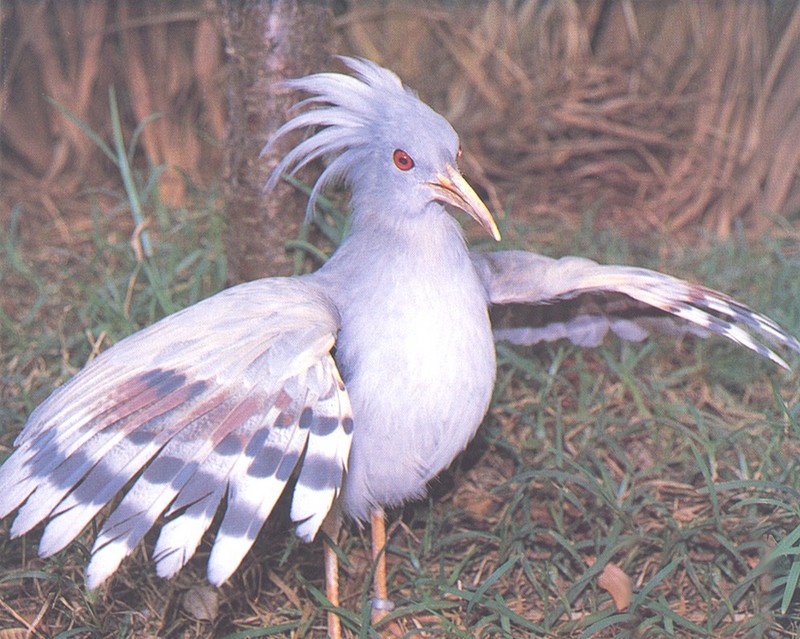|
| Query: black back | Result: 1127th of 1142 | |
Kagu (Rhynochetos jubatus) <!--카구-->
| Subject: | Kagu (Rhynochetos jubatus)
| |

| Resolution: 996x796
File Size: 238463 Bytes
Upload Date: 2006:02:02 00:31:50
|
The Endangered Kagu is endemic to New Caledonia.
The Kagu (Rhynochetos jubatus) is a flightless bird with grey plumage; its pale colouring has led to the name of 'ghost of the forest' by local people. The sexes are similar in appearance with mainly ash-grey plumage apart from black barring on the wings that is only visible when they are out-stretched. There is a prominent crest of feathers on the back of the head, which may be erected in display, and the legs and bill are orange in colour.
Comments
=======
The kagu or cagou (Rhynochetos jubatus) is a crested, long-legged, and bluish-grey bird endemic to the dense mountain forests of New Caledonia. Rhynochetos jubatus is the only surviving member of the genus Rhynochetos and the family Rhynochetidae.
|
Comments |
|---|
| | Guest |
|
Scientific Name: Rhynochetos jubatus Verreaux & Des Murs, 1860
Common Names: Kagu, Cagou
French: Kagou huppé; German: Kagu; Spanish: Kagú
Taxonomy: Rhynochetos jubatus J. P. Verreaux and Des Murs, 1860, New Caledonia. |
^o^
Animal Pictures Archive for smart phones
^o^
|
|
|